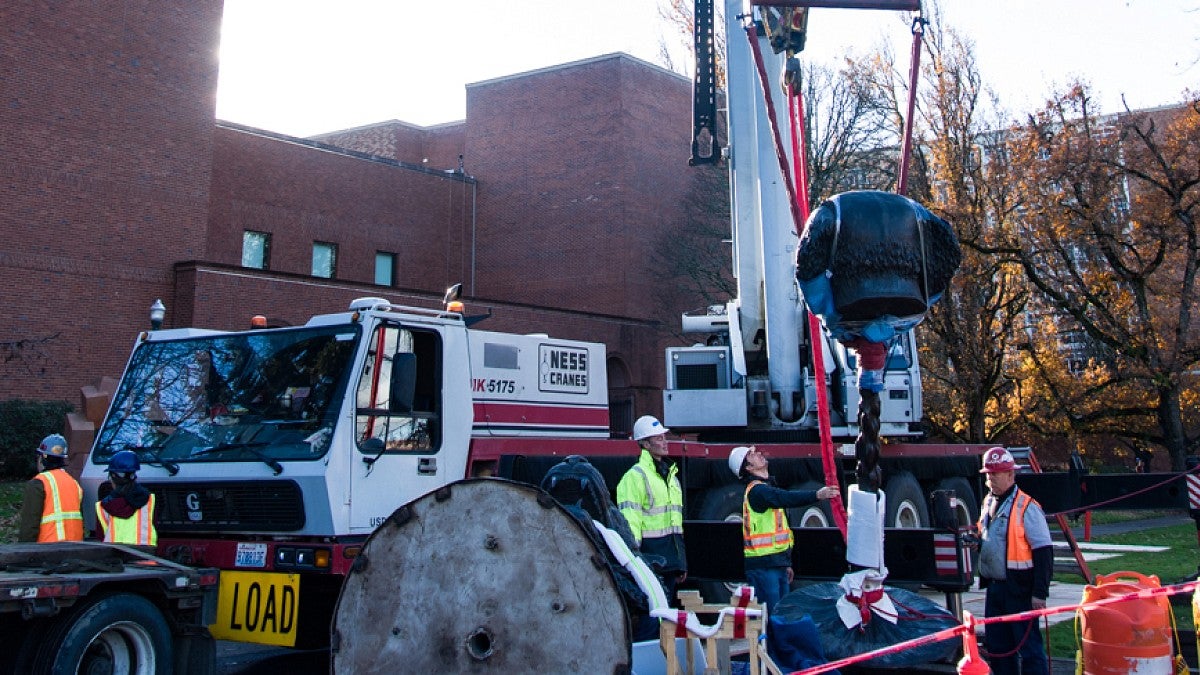The Chinese zodiac does not have a Year of the Duck, but that won't keep its 12 astrological animals from paying a campus visit.
The UO’s Jordan Schnitzer Museum of Art is hosting an almost-eight-month exhibit of acclaimed international artist Ai Weiwei’s imposing sculpture “Circle of Animals/Zodiac Heads” in its north courtyard. The works go on view Friday, Dec. 1, and will remain until June 24.
The dozen bronze castings represent the 12 figures of the Chinese zodiac: snake, horse, ram, monkey, rooster, dog, pig, rat, ox, tiger, rabbit and dragon. They are a reinterpretation of sculptures that once adorned the famed fountain clock of the Old Summer Palace, known as Yuanming Yuan, outside Beijing.
Each of the bronze pieces is roughly 10 feet tall. They are the larger of two versions Weiwei created; the other is a smaller gold collector series.
Ai’s “Circle of Animals/Zodiac Heads: Bronze and Gold” series have been exhibited at more than 40 international venues and seen by millions of people since the official launch of this body of work in New York City in 2011, making this one of the most viewed sculpture projects in the history of contemporary art.
The original figures were part of a storied, European-styled garden at the Old Summer Palace. But they were taken by French and British troops who ransacked the palace in 1860. Only about half have been returned.
The new work by Ai brings attention to issues of looting and repatriation by re-creating the sculptures on an oversize scale. It also extends his ongoing exploration of the “fake” and “copy” in relation to the original.
One of China’s most prolific and provocative contemporary artists, Ai is known for such major projects as the installation “Fairytale” at Documenta 12 in 2007 and his collaboration on the design for the main stadium for the 2008 Olympic Games in Beijing, as well as for his embrace of the internet and social media as active platforms for cultural commentary and artistic practice in their own right.
Throughout his career, Ai has consistently offered insights into the relationships between art, society and individual experience through his exploration of universal topics such as culture, history, politics and tradition.


